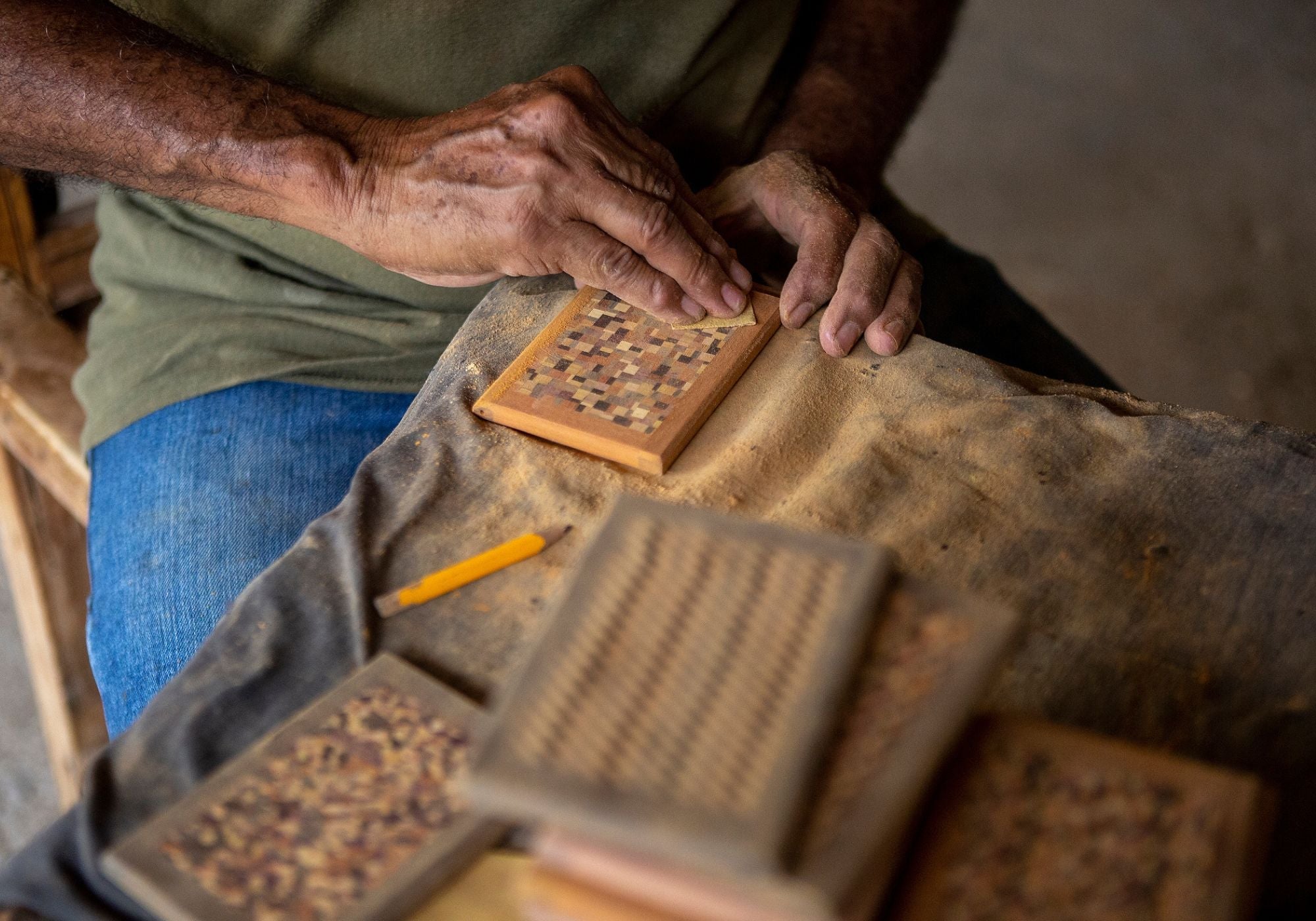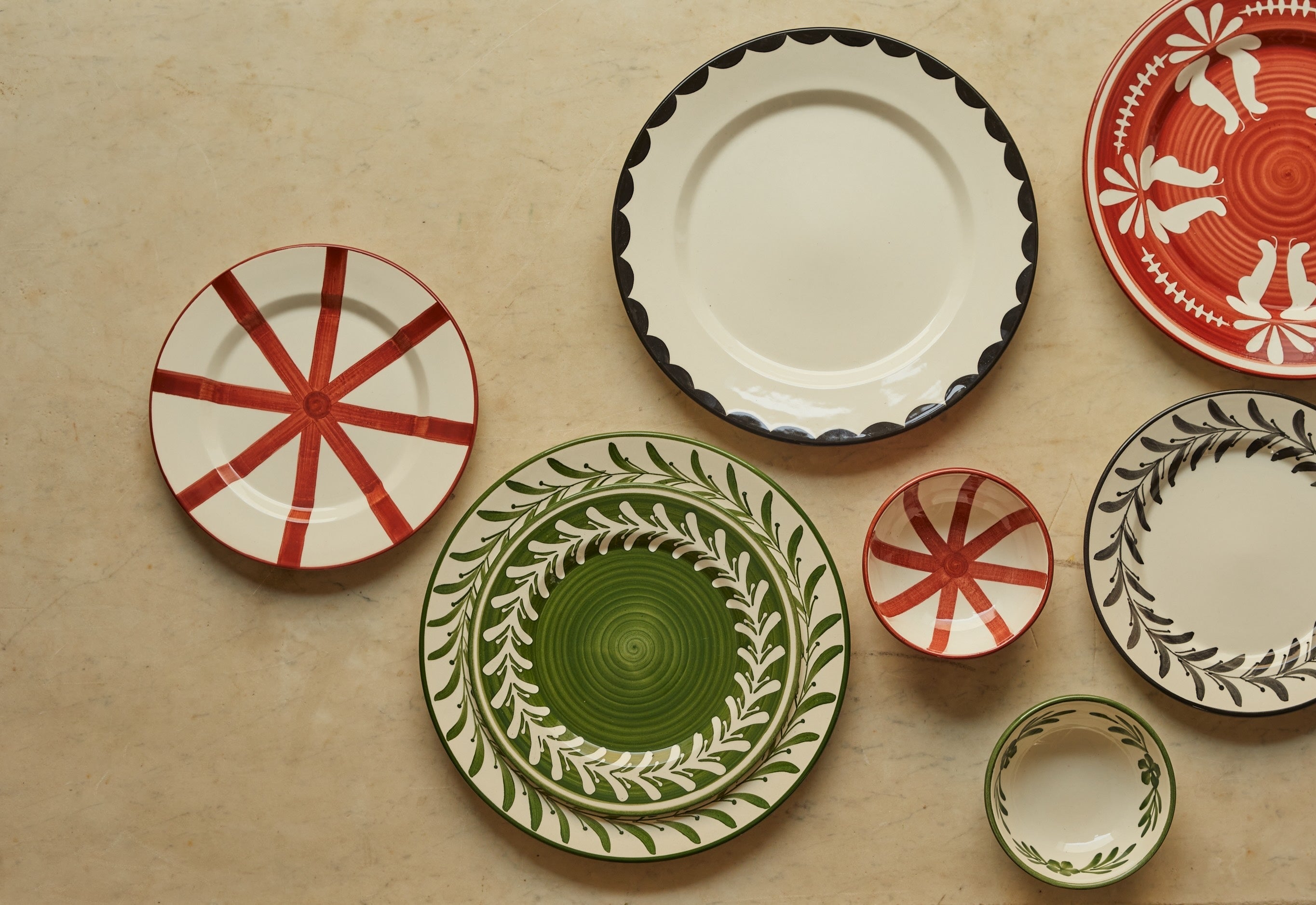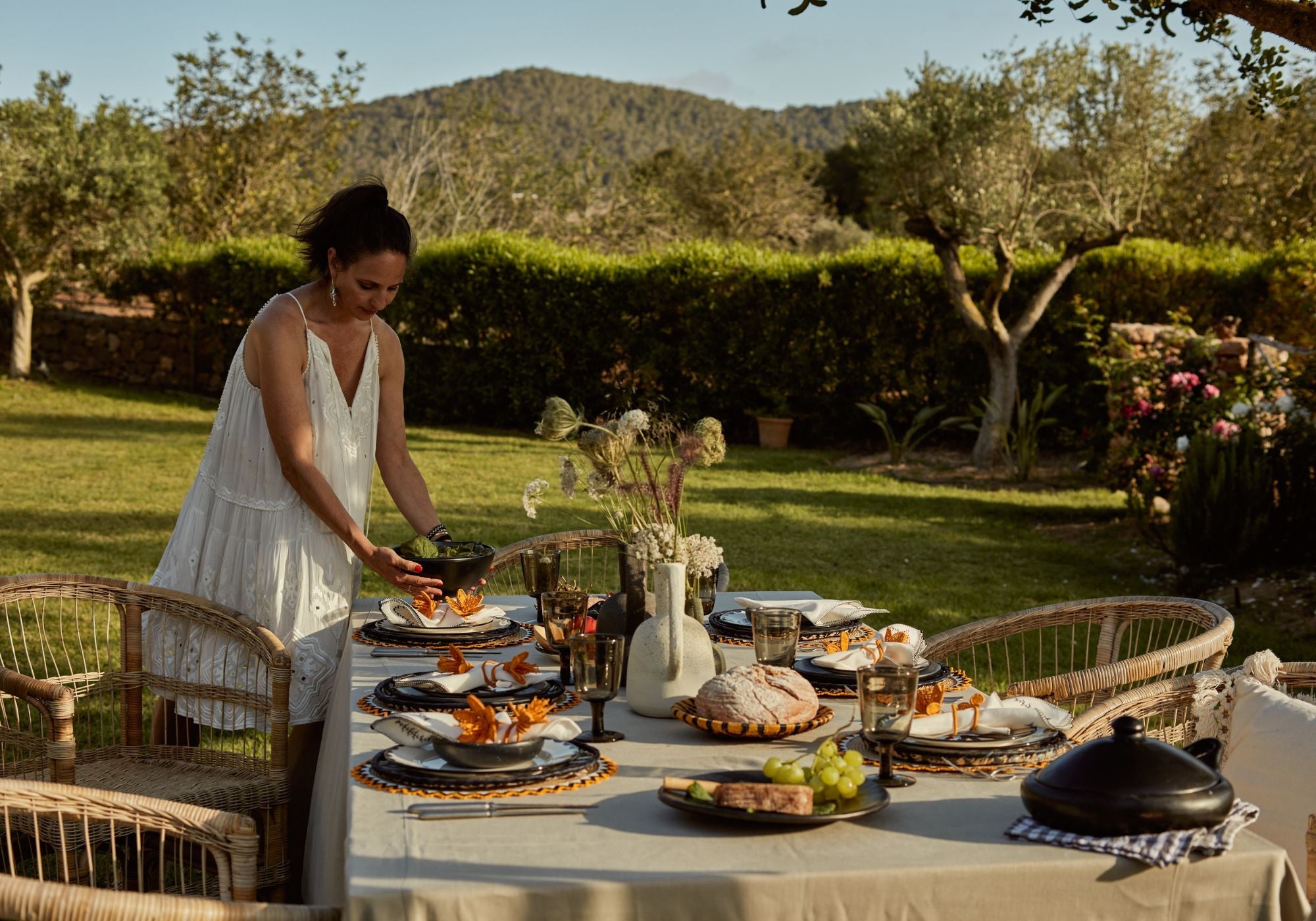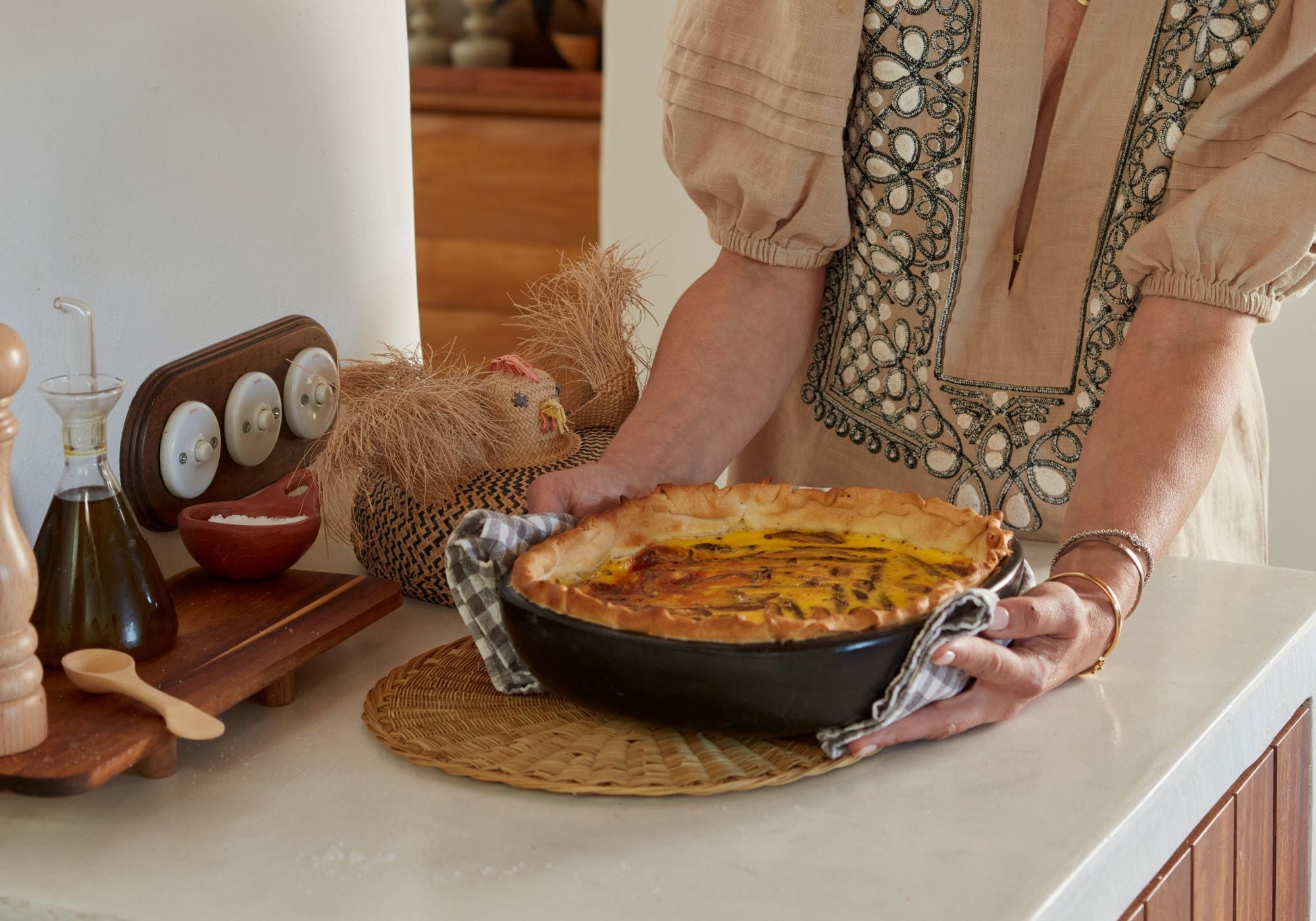
A Journey Through Quibor and Guadalupe: The Heart of Venezuelan Marquetry
Venezuela is home to a vibrant artisanal culture, with regions that preserve ancient crafts passed down through generations. Our recent journey to Quibor and Guadalupe, two small towns in the state of Lara, brought us face to face with an exceptional community of artisans dedicated to the age-old practices of wooden craft and marquetry. Here, these skilled artisans transform native woods into pieces of timeless beauty, blending sustainability with artistry. In this blog, we invite you to explore the unique heritage of Quibor and Guadalupe, from their storied history to the intricate process behind the handcarved wooden piece in our Lara Range.
Discovering the Wood Craft Culture of Quibor and Guadalupe
In the heart of Venezuela, nestled in the Lara state between the dramatic peaks of the Andes and the expanse of the Coro desert, lies the town of Quibor. This modest yet vibrant market town has gained recognition across Latin America for its deep-rooted history in wooden craftsmanship, tracing back to colonial times. Quibor, along with its neighbouring village, Guadalupe, is known for its skilled artisans who have upheld the traditions of wood carving and marquetry for centuries. These techniques, passed down through generations, celebrate the wider region’s rich culture and its wealth of natural resources, particularly its variety of vibrant woods.
The artisans in Quibor and Guadalupe are masters of their craft, working with a diverse palette of local tropical hardwoods. Black ebony, blond oak, red carob, and the deep purple of Verawood bring distinct colours and textures to the pieces produced here. These woods, abundant in the lush surroundings of Lara, serve as a canvas for artisans to showcase their skill. The tradition of woodcraft here is not only a livelihood but also a way to preserve a unique cultural heritage, one that intertwines with the region's religious and artistic history.

A Legacy of Marquetry: The Rich History of Wooden Artisanship
Woodworking in Quibor and Guadalupe dates back centuries, rooted in the colonial period when artisans would carve religious effigies and figures for churches and cathedrals throughout the region. As the craft evolved, these talented artisans began to extend their woodworking skills into creating functional and decorative items. In the early 20th century, the craft in Quibor saw a new layer of artistry introduced through German immigrants who brought with them the intricate skills of marquetry. This technique, which involves creating patterns and images by inlaying different types of wood, was quickly adopted and incorporated into the local carving tradition, adding a refined aesthetic to the wooden creations of Quibor and Guadalupe.
The availability of colorful native woods in Lara made marquetry a natural fit for the region’s artisans. Today, their craft reflects a harmonious blend of traditional carving with marquetry, offering stunning pieces that are as functional as they are beautiful. These handcrafted pieces are a testament to the skill and creativity of the artisans, whose knowledge of wood types, color combinations, and techniques have been honed over many years.

Crafting Marquetry Masterpieces: The Wooden Artisans’ Process
The artistry behind each piece from Quibor and Guadalupe starts with the wood itself. Unlike mass-produced wooden products, which often rely on fresh timber, these artisans are committed to sustainable practices. They begin with fallen or dead wood, ensuring minimal environmental impact. This wood is carefully dried to prevent warping or cracking and is then cut into workable sizes. Drying is a meticulous process, often involving several rounds in large ovens to achieve the perfect moisture level, which is critical for achieving the high-quality finish associated with marquetry.
Once the wood is prepared, the carving and inlay work begins. For larger pieces, artisans may start with a single block of wood, carving out the design using chisels and other hand tools. Marquetry, however, involves a different approach. To create the intricate patterns, artisans glue together strips of variously coloured woods in layers. These blocks are then turned, cut, and re-glued in geometric arrangements of the marquetry piece. By slicing the block transversely, the wood reveals a stunning cross-section of the layered colours and patterns, producing the intricate marquetry effect.
After the carving or inlaying is complete, the piece undergoes a series of finishing touches. The final product is sanded to a smooth, polished surface, bringing out the wood’s natural hues and grains. Instead of synthetic varnishes, the artisans use coconut oil to seal the wood, allowing it to retain its natural beauty and luster. This finish keeps the wood “alive,” aging gracefully over time without the environmental impact of chemical varnishes.
Showcasing the Lara Range: Unique Marquetry and Wooden Pieces
The result of this artistry is evident in every piece, from serving trays to bowls and decorative items that are as beautiful as they are functional. The Lara Range, our collection crafted in collaboration with the artisans of Guadalupe, showcases their unmatched skill in marquetry and woodwork. Each piece is a blend of traditional craftsmanship with modern design, making it a standout addition to any space. The wooden trays in particular highlight the artisans’ precision with inlaid marquetry patterns that elevate the natural beauty of the wood, while the bowls and utensils embody a refined simplicity that speaks to the artistry of Quibor and Guadalupe.
During our visit to these artisans back in July, after a six-hour drive from Caracas, we were struck by the skill and resilience of these craftsmen. Despite the economic challenges and the recent closure of the local market in Quibor—a market that once thrived and provided a venue for artisans to showcase and sell their creations—many artisans continue their work, preserving their traditions. We met with Argenis Castañeda, a dedicated marquetry artisan who has kept his workshop open despite these challenges. His dedication to marquetry and wooden crafts is truly inspiring, and we were honoured to collaborate with him on designs for our Lara Marquetry Trays, which highlight the beauty and versatility of marquetry - a traditional art form.

This partnership aims to not only bring these exceptional marquetry pieces to a wider audience but also to create sustainable opportunities for artisans like Argenis. By supporting their craft, we hope to contribute to the preservation of this age-old tradition, ensuring that these marquetry artisans can continue to pass their skills down through generations. The marquetry and wooden pieces of Quibor and Guadalupe are more than just decorative items—they are a bridge between past and present, embodying the cultural legacy of Lara and the enduring spirit of its people.
For a closer look at our Lara Marquetry Range and to support these artisans, visit our collection here .
More Posts

Creating the perfect plate wall
Learn how to achieve a stylish plate wall decor that feels unique. Bring warmth, personality, and artisan craftsmanship into your home with CasaLatina.
Read more
Getting ready for summer hosting
Summer at CasaLatina is all about meaningful moments with loved ones. In this post, Sharon shares her top tips for effortless summer hosting — from prepping linens and tech checks to creating beaut...
Read more
Alice Water's Inspired Summer Qiche
A silky, custard-style quiche inspired by a memorable meal at Chez Panisse. Made with grilled asparagus, oyster mushrooms, and baked in a Chamba gratin dish
Read more





